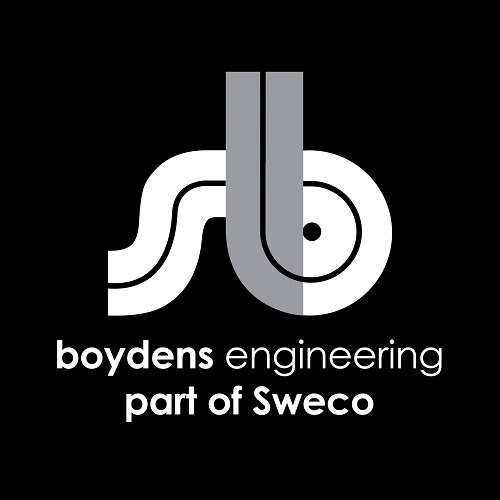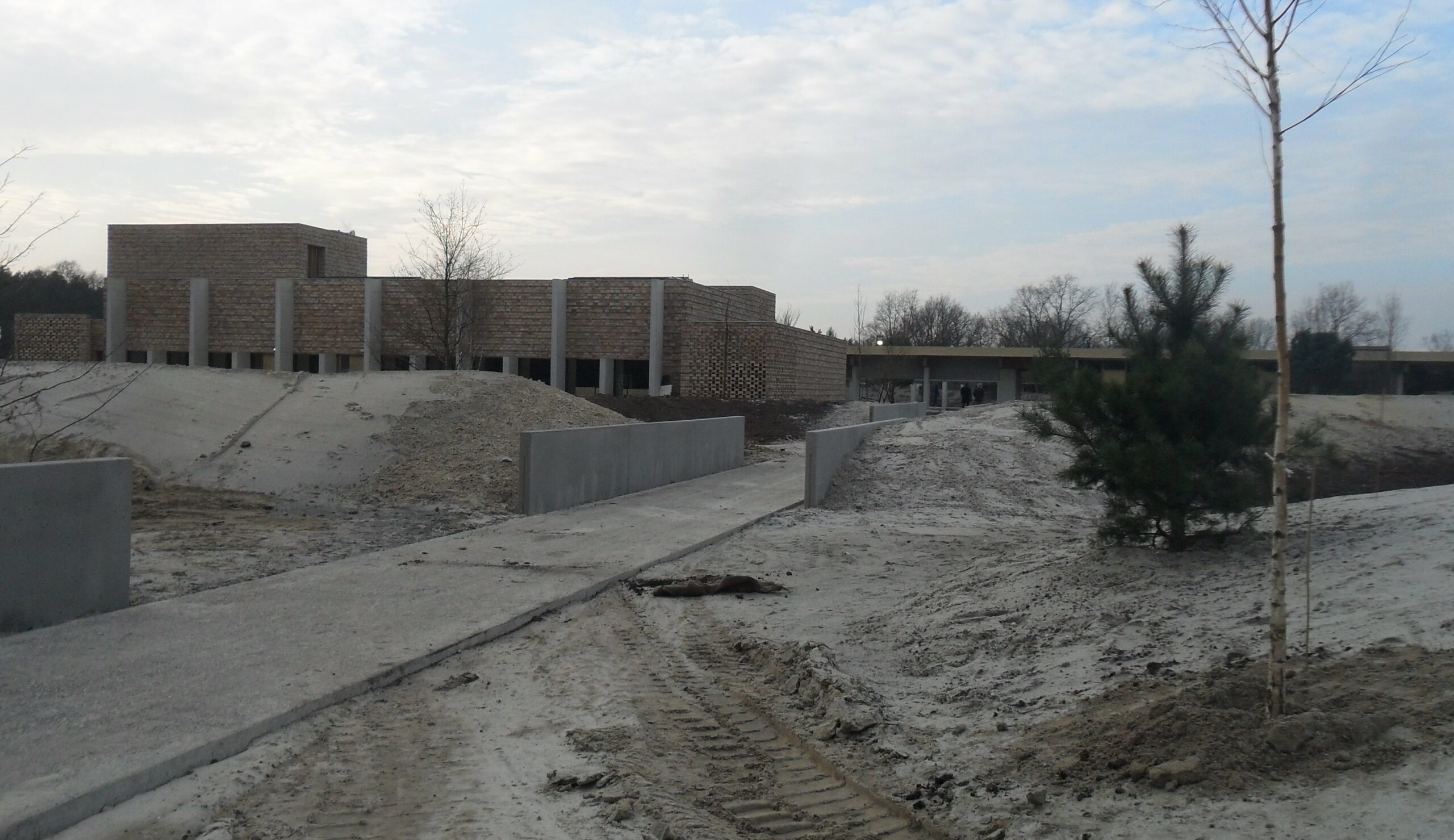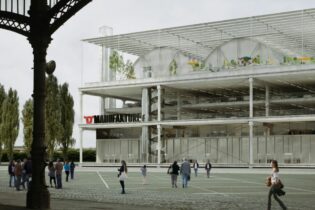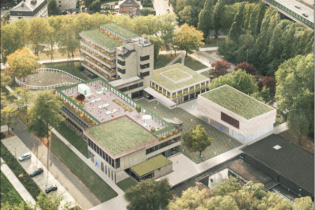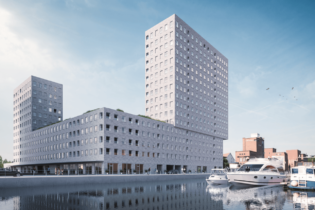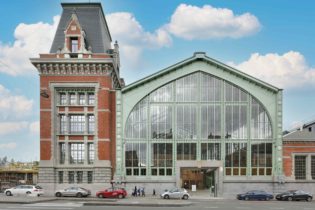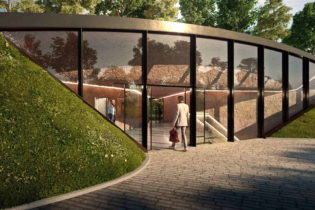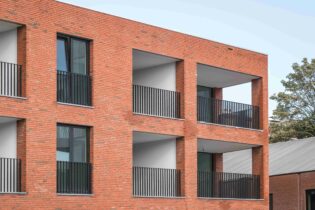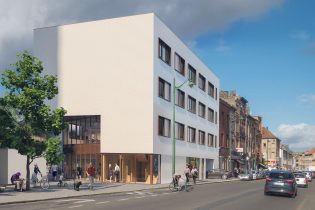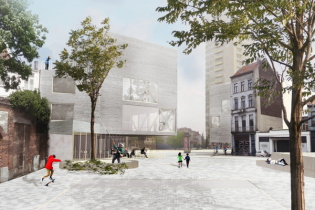‘STUIFDUIN’ CREMATORY NEXT TO THE CEMETERY ‘CENTRUM LOMMEL’
Lommel, Belgium, Europe
Total technical installation cost: 1.910.174,21 € VAT excluded
Total construction cost:7.300.000,00 € VAT excluded
K-level: 35
E-levell: 55
Certification: Ecodesign 2018
The city of Lommel commissioned the building of ‘Stuifduin’ the new community crematorium and funeral home (remaining adjacent to the cemetery). The crematorium will reduce the need for residents to travel far to other cities in order to bid farewell to their loved ones.
Nature plays a crucial role in the design, opting for an architecture where nature is central. The building is transparent and blends with the surrounding landscape of existing pine forest and sandy dunes. As a result, the windows utilized have a low g-value to reduced and limit solar gains. The remaining cooling load is eliminated by adiabatic cooling.
Cremation processes inherently not only require significant energy to operate, but they also produce a significant amount of heat. In order to optimize the entire operation, it was necessary to look at the energy requirements, and to study the energy generated that could be recuperated and put to use.
Residual heat produced is recuperated 100% and utilized to heat the rest of the funeral home. The funeral home facility (memorial service auditoriums, smaller private condolence rooms and coffee rooms) often experience variable occupation levels, which require a quick and adequate delivery system for heating and cooling. To save energy, the air flow is controlled according to occupancy levels of the different areas.
